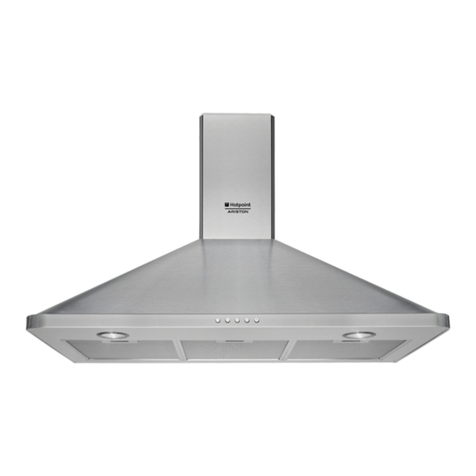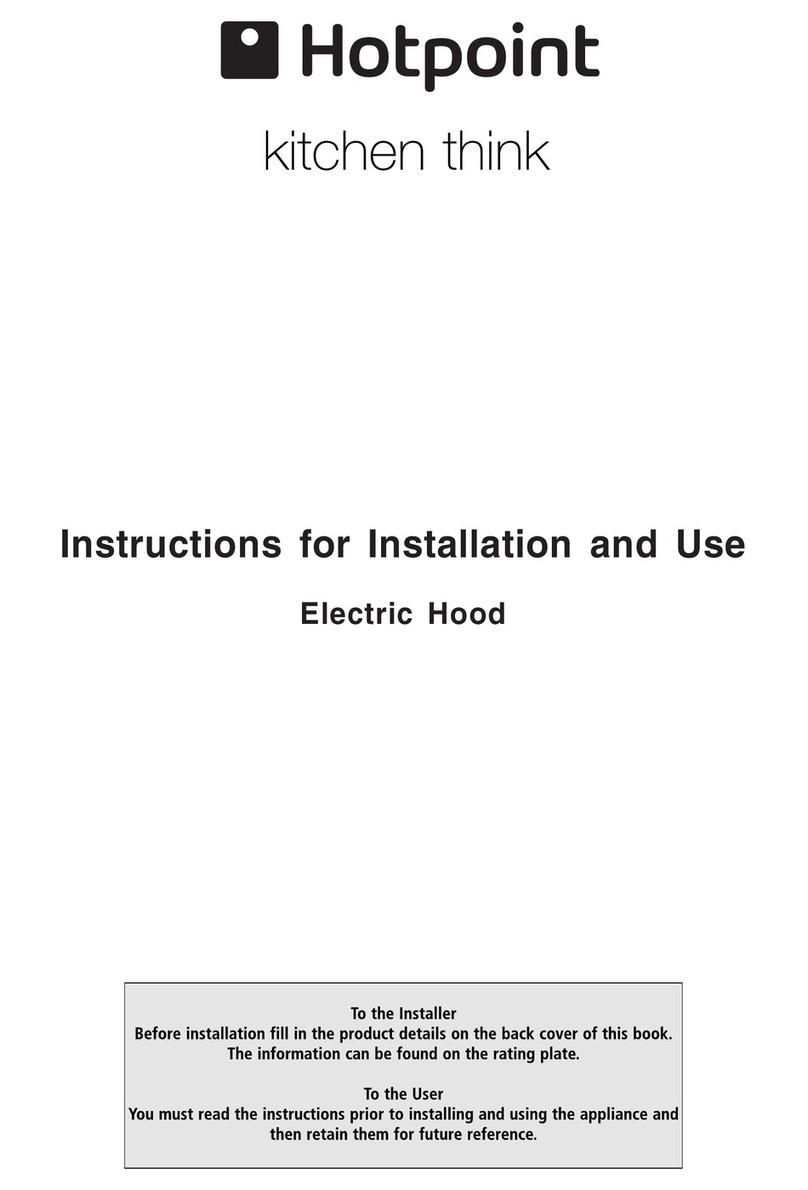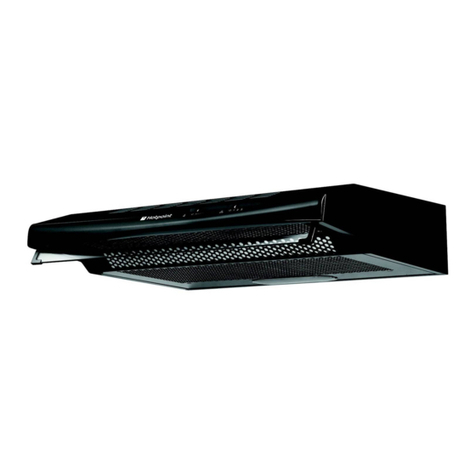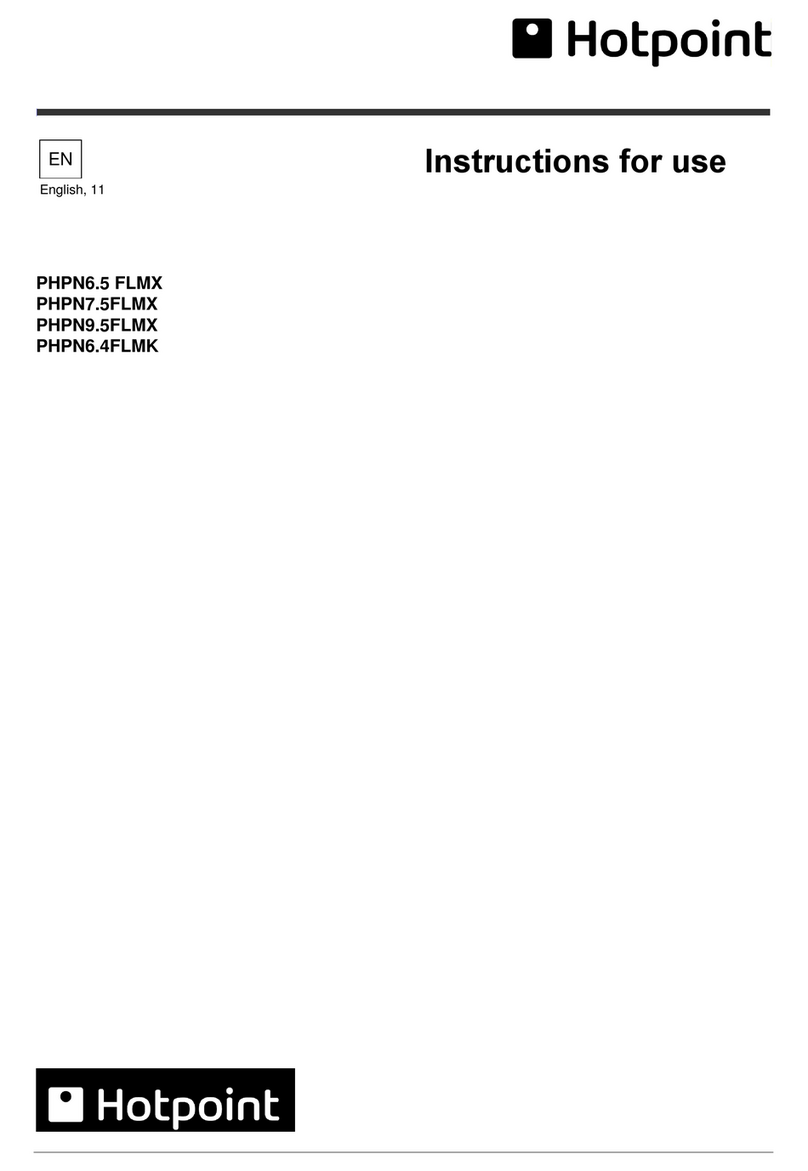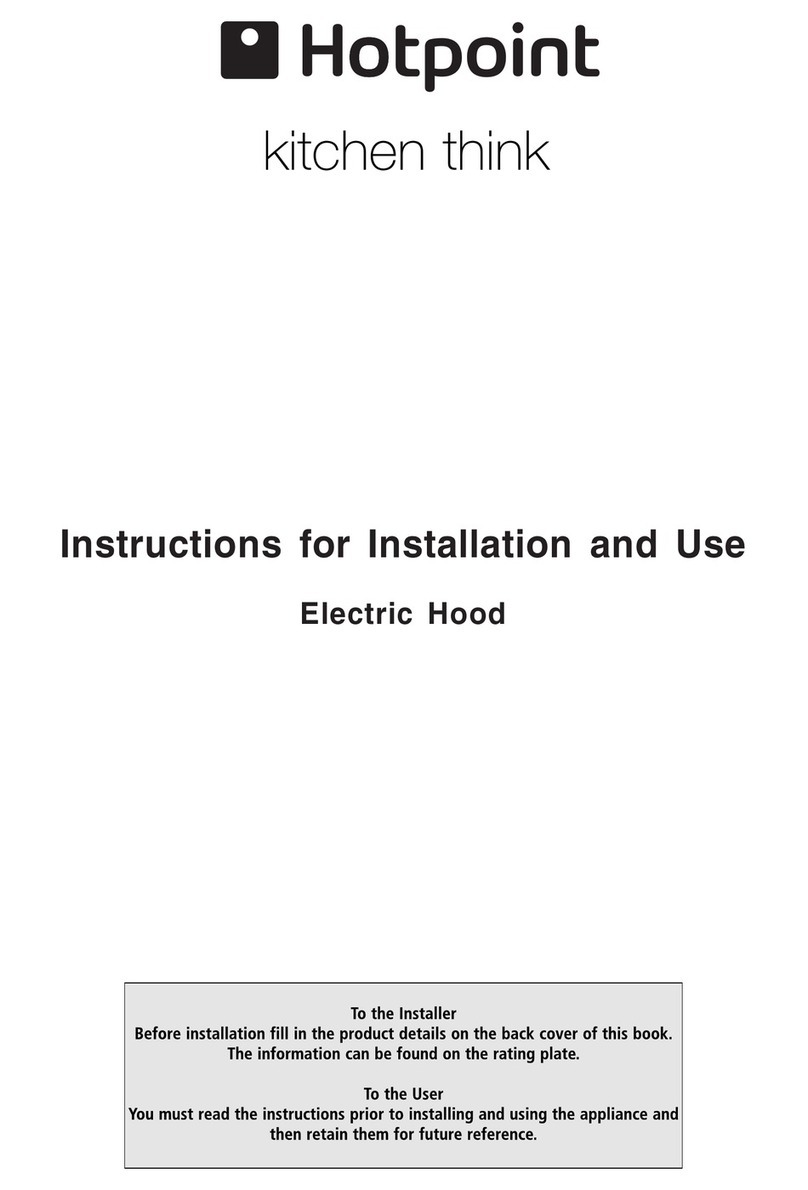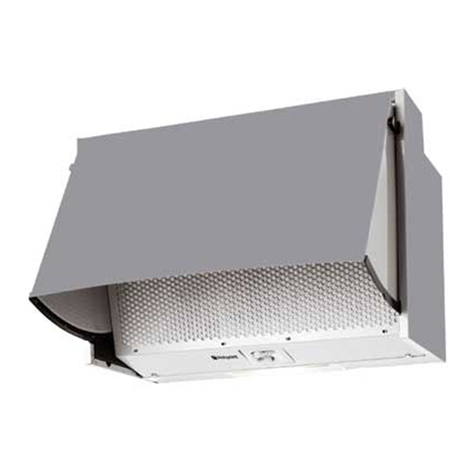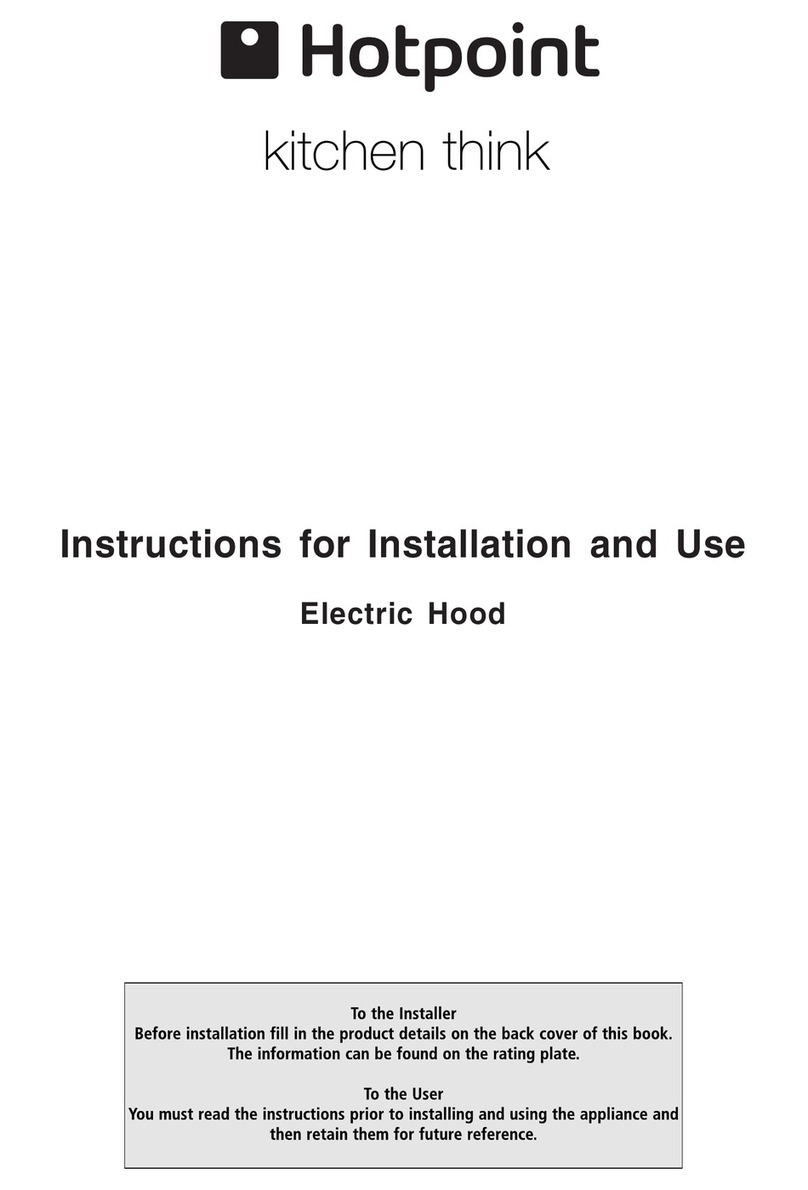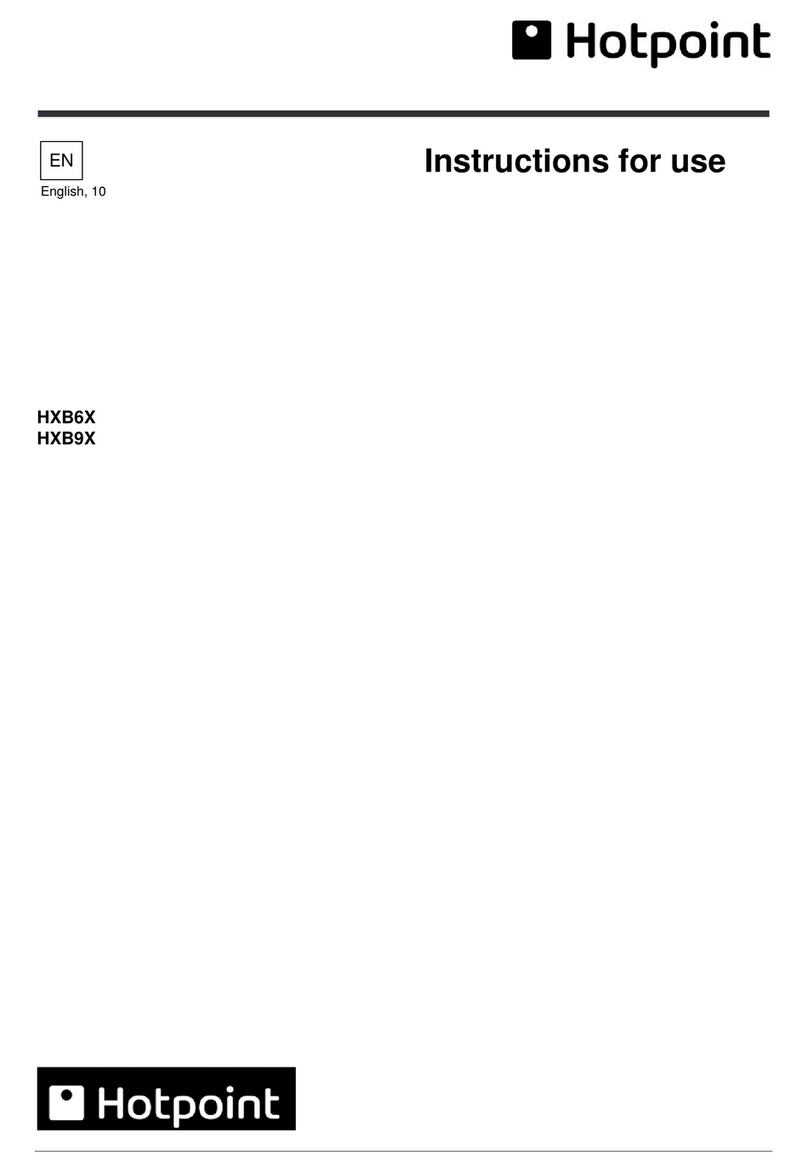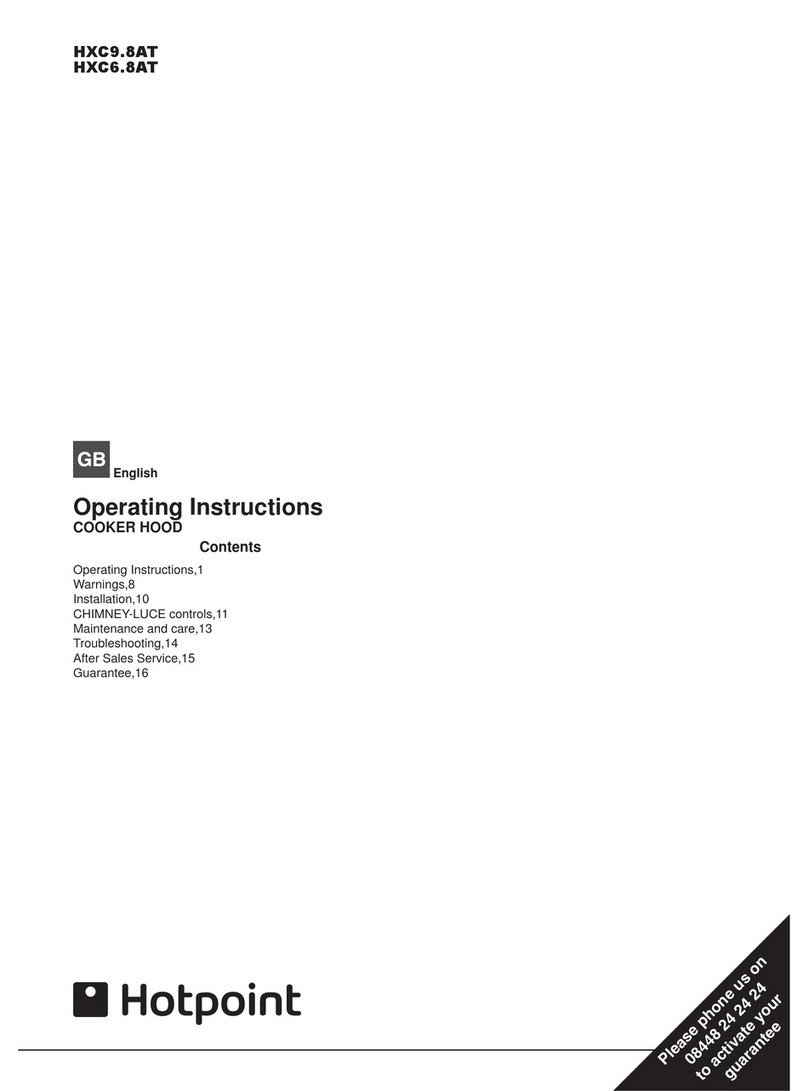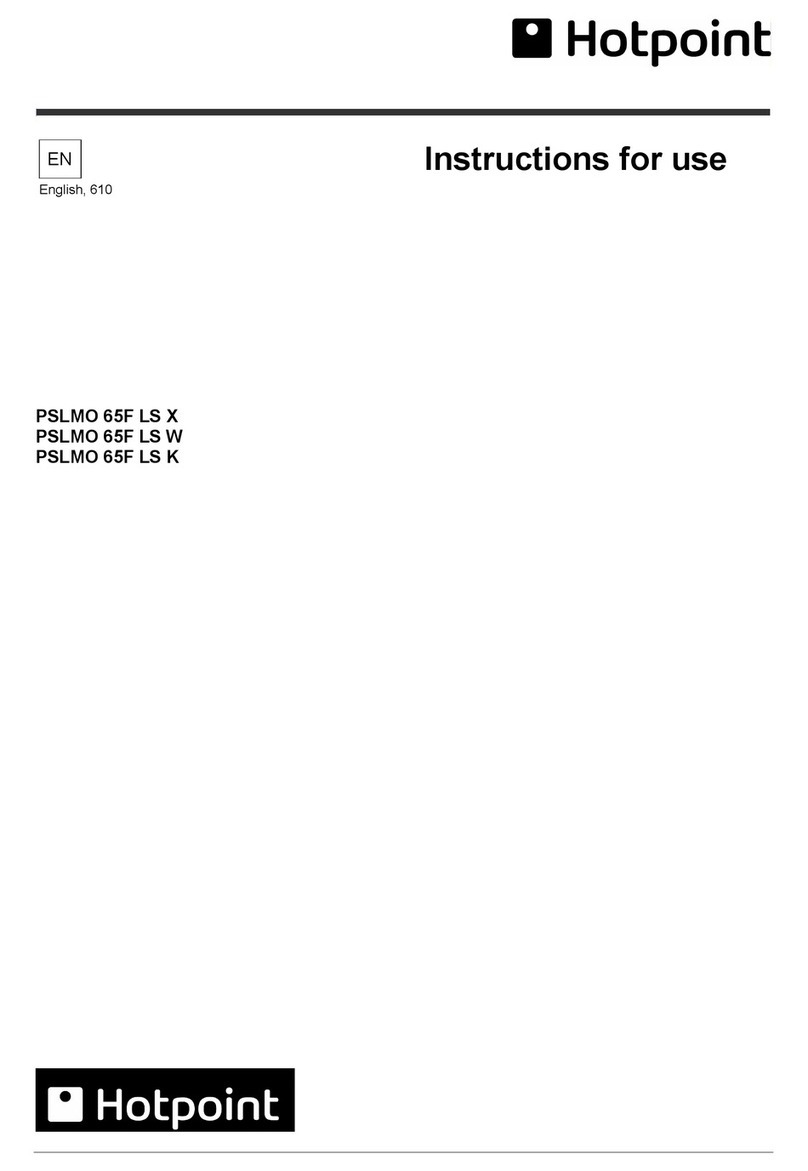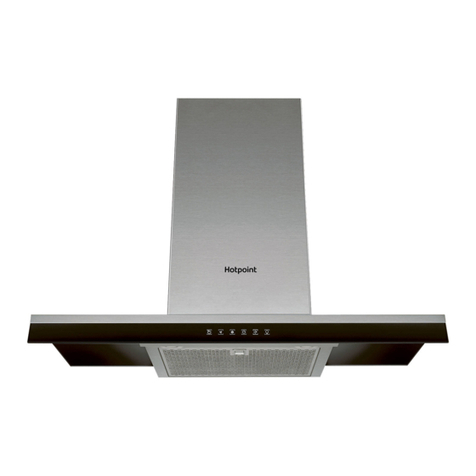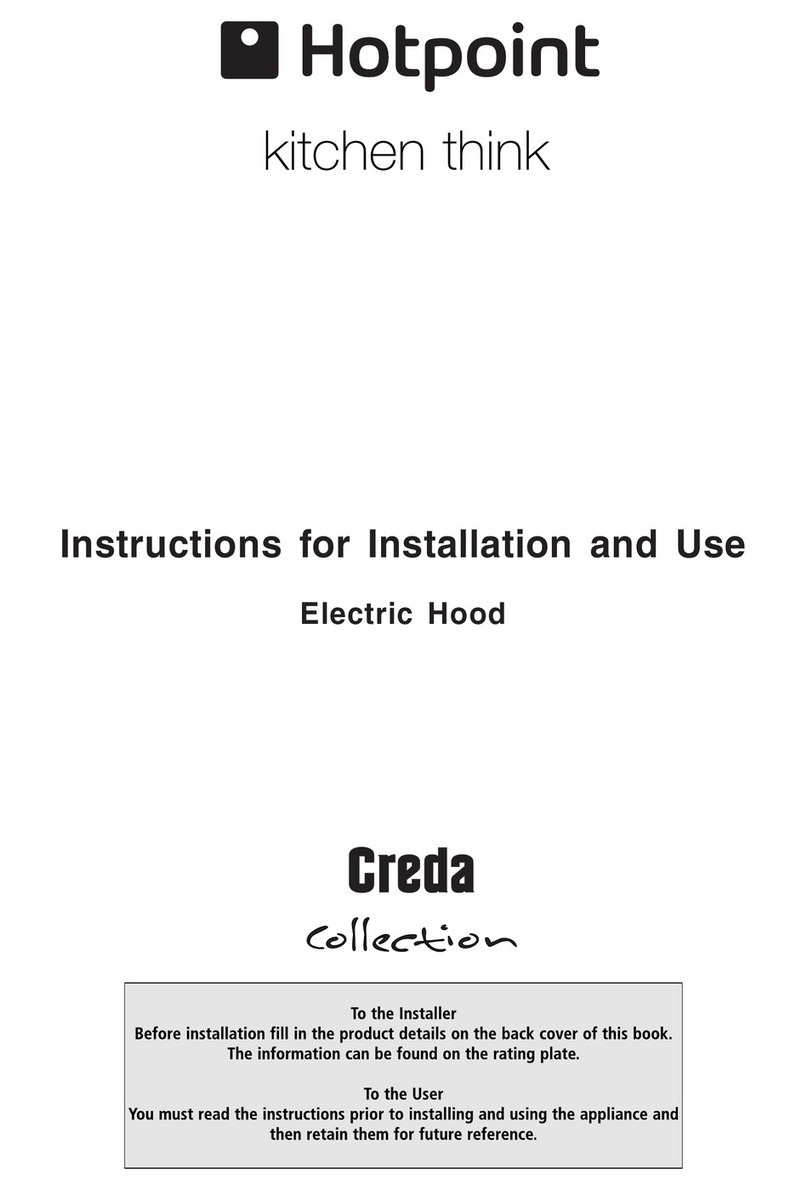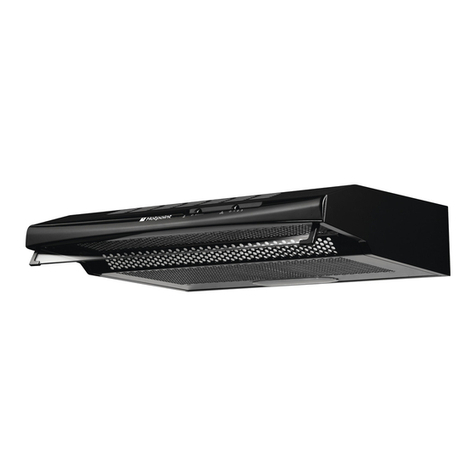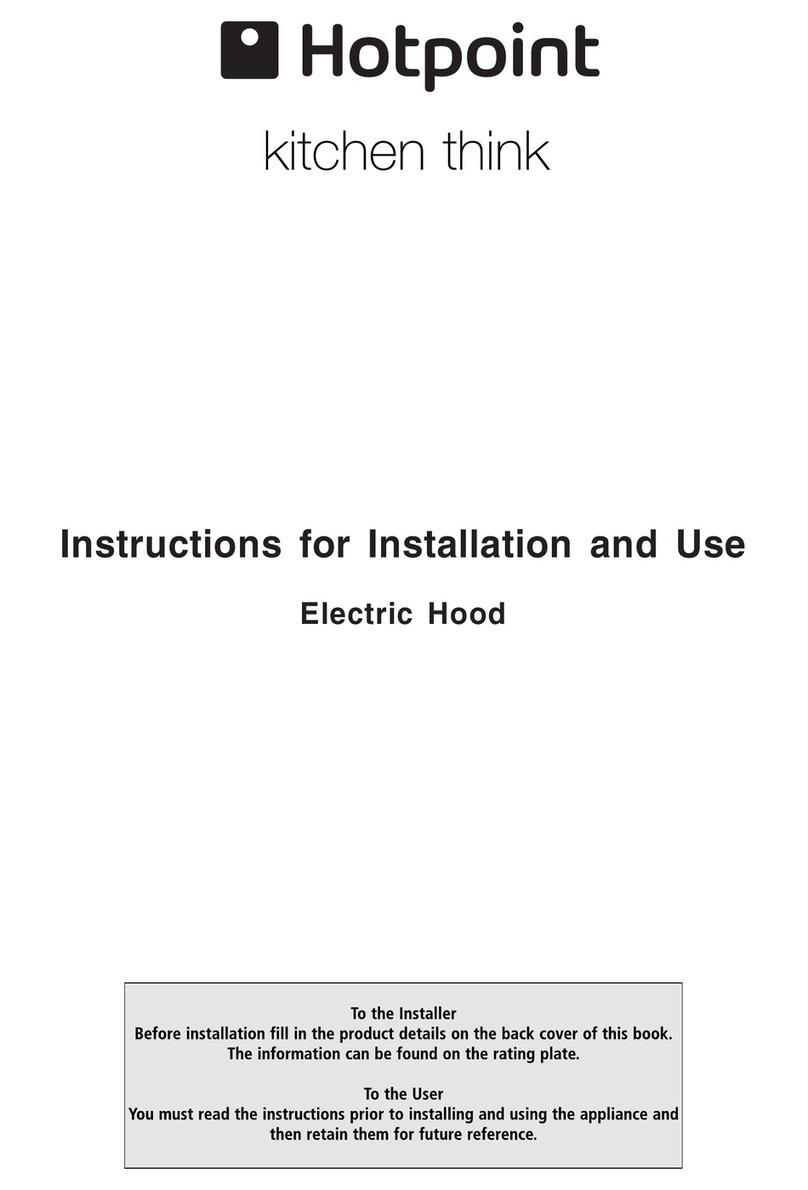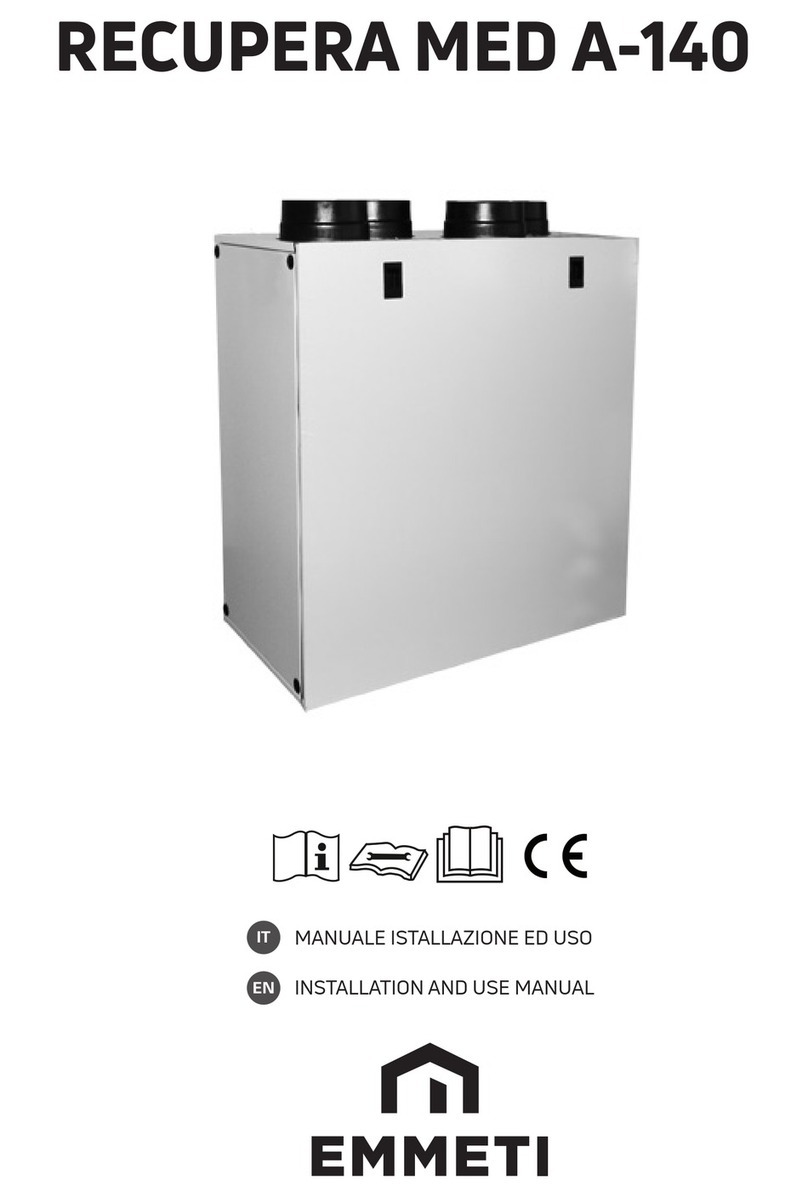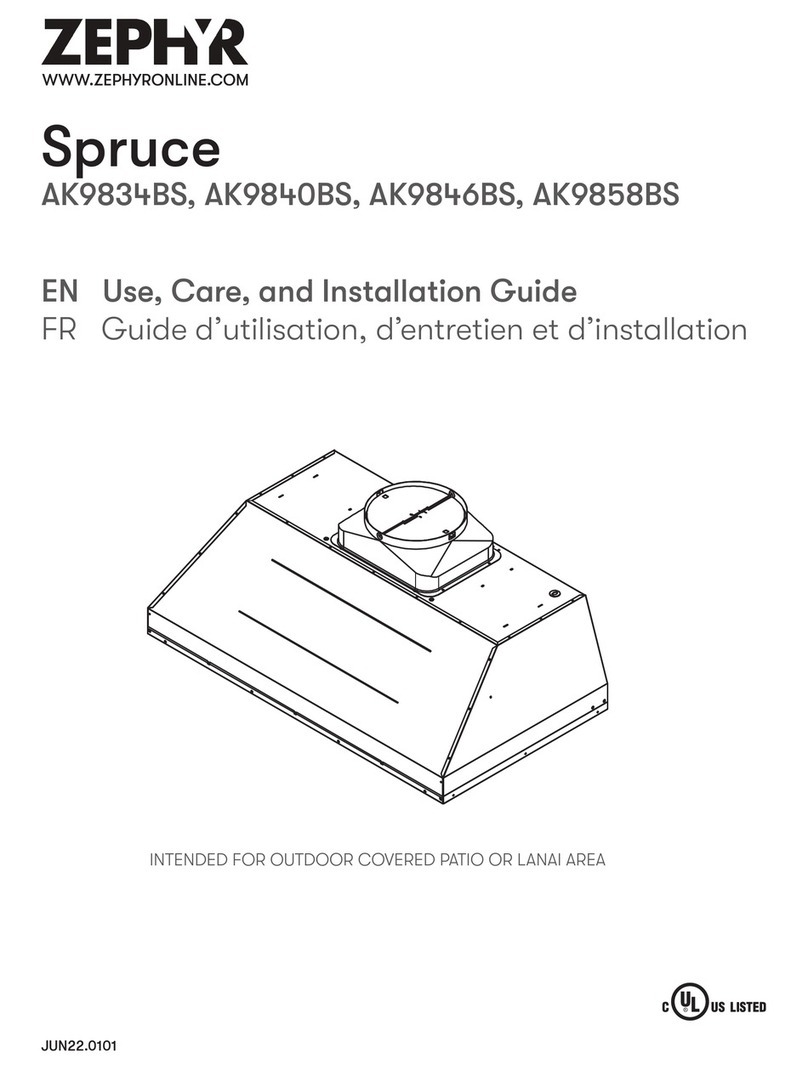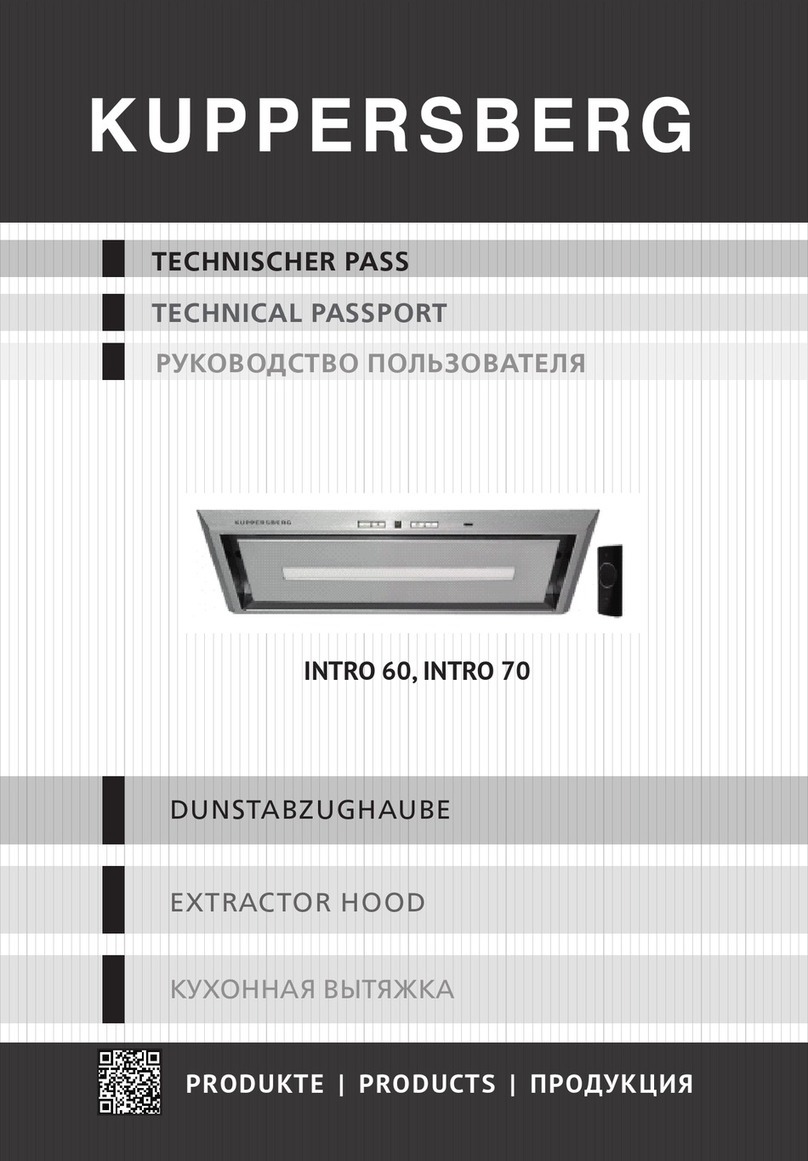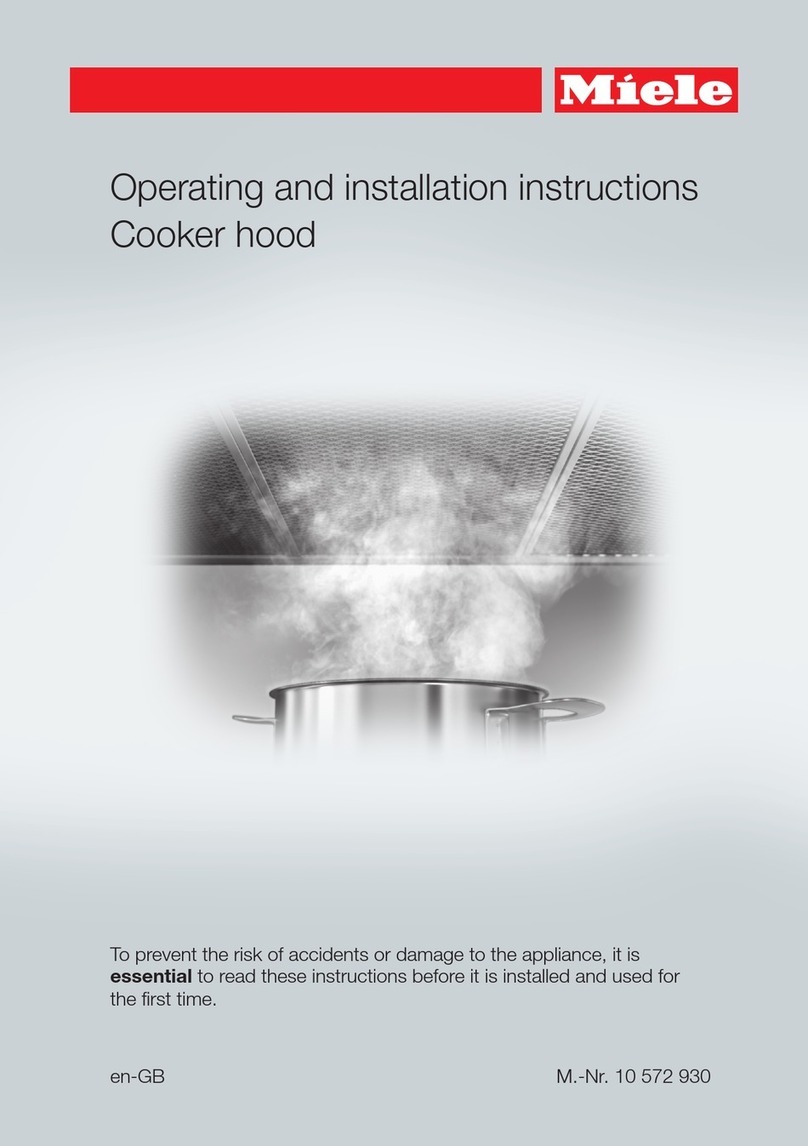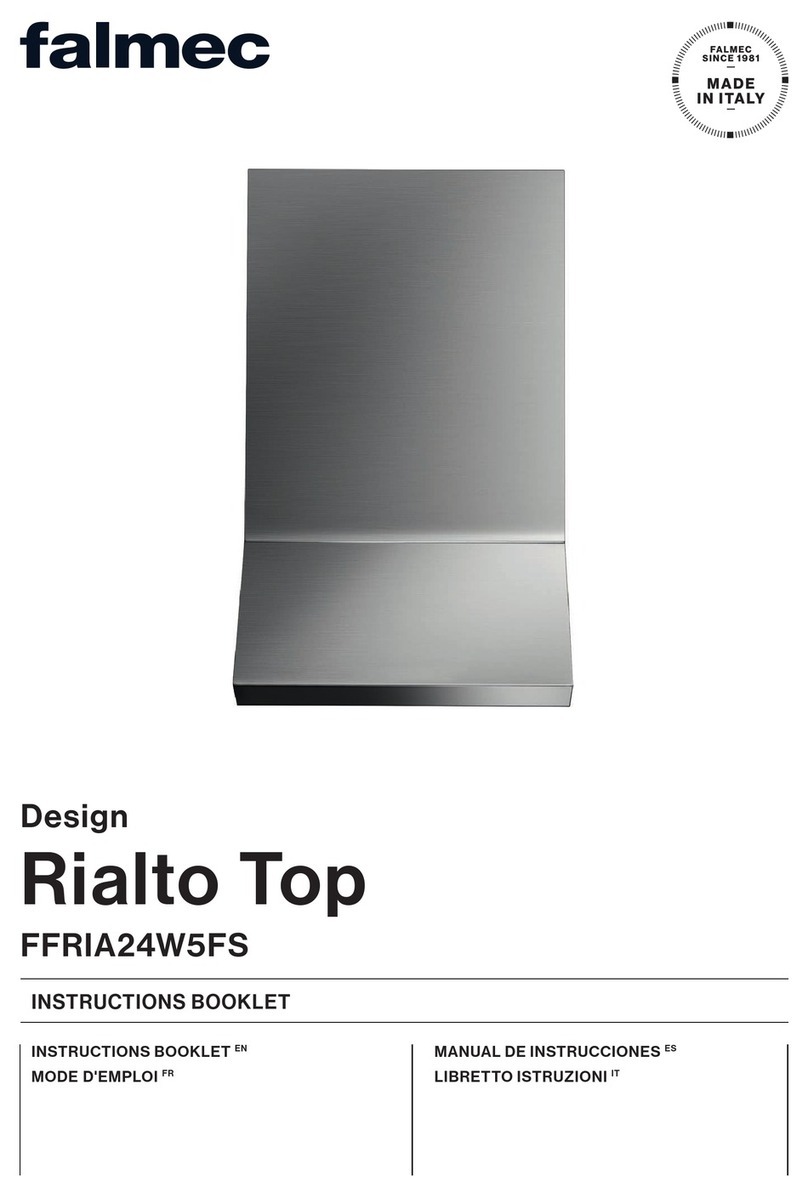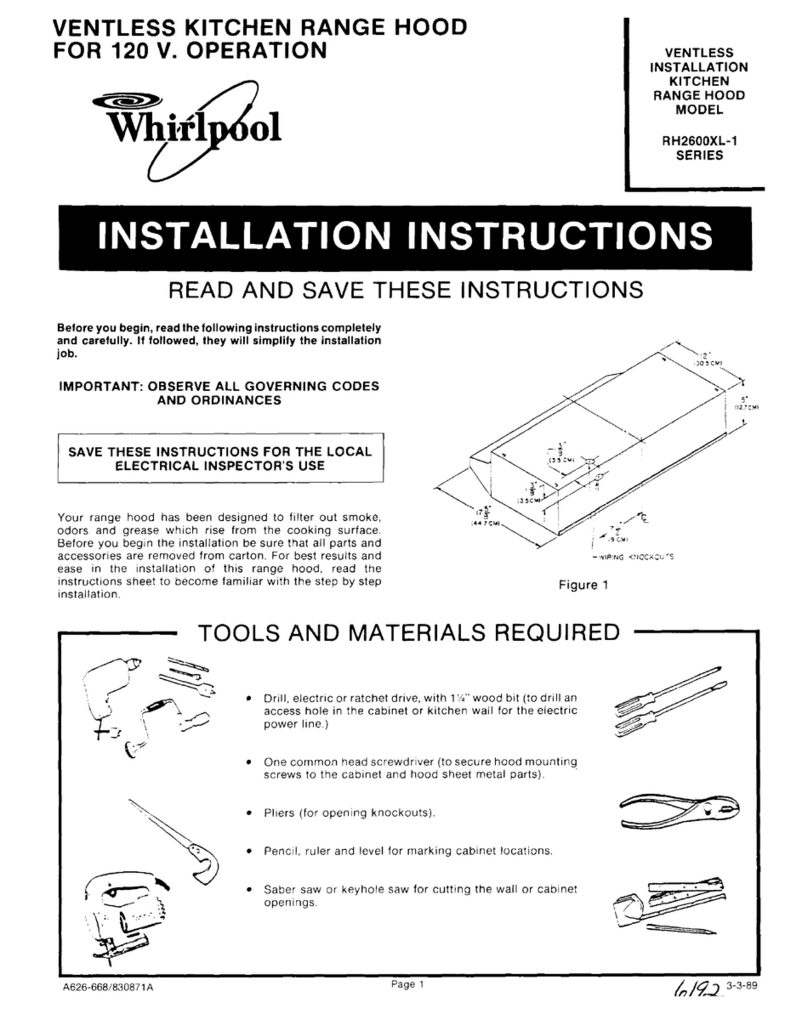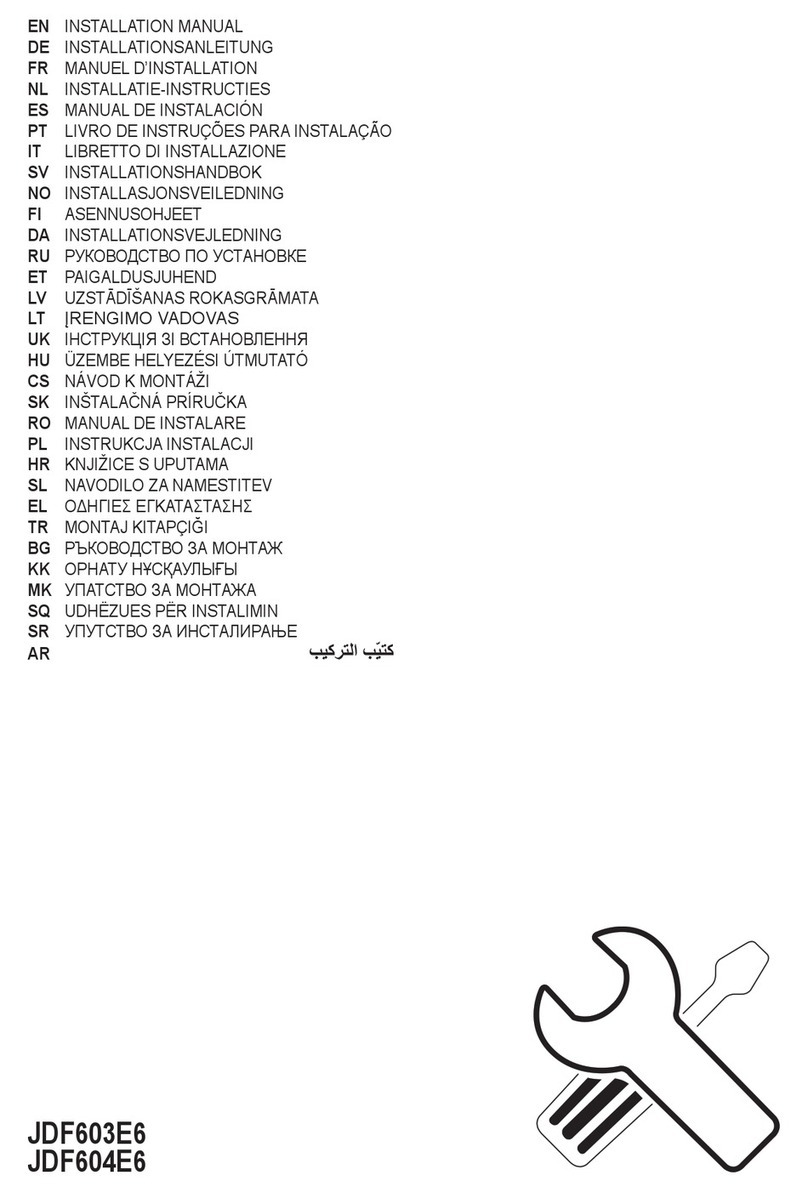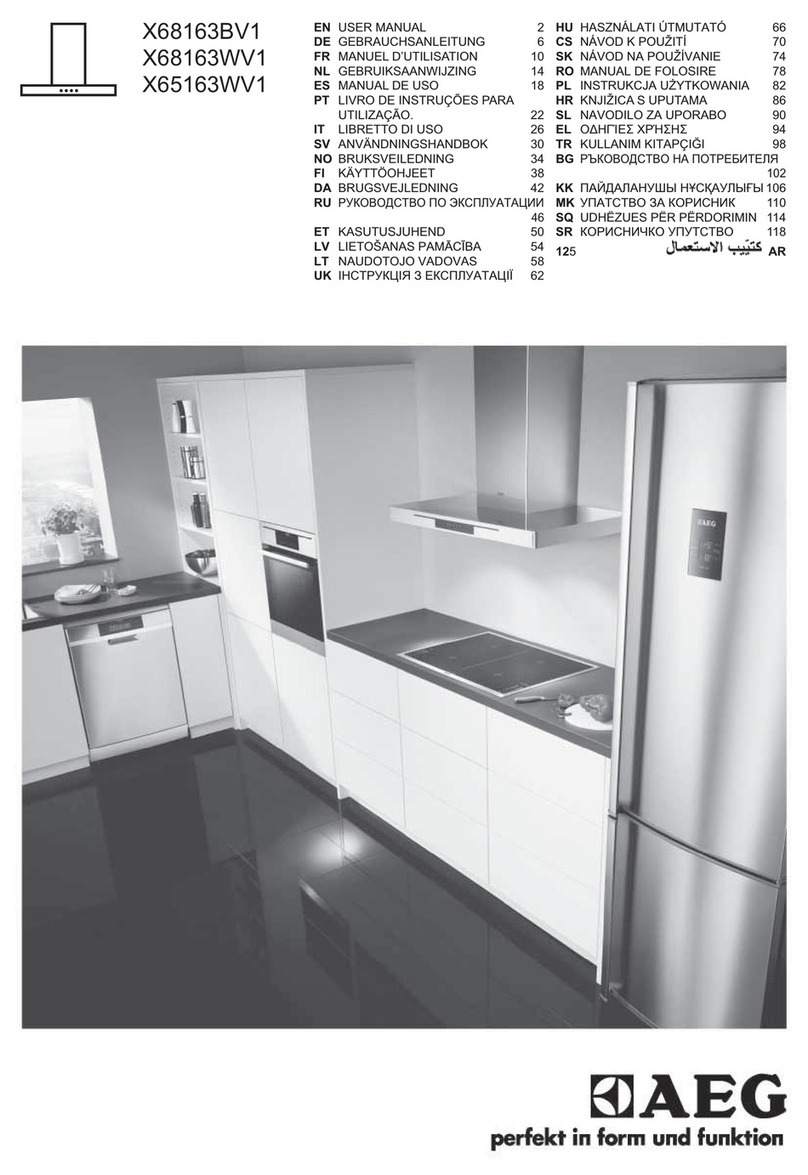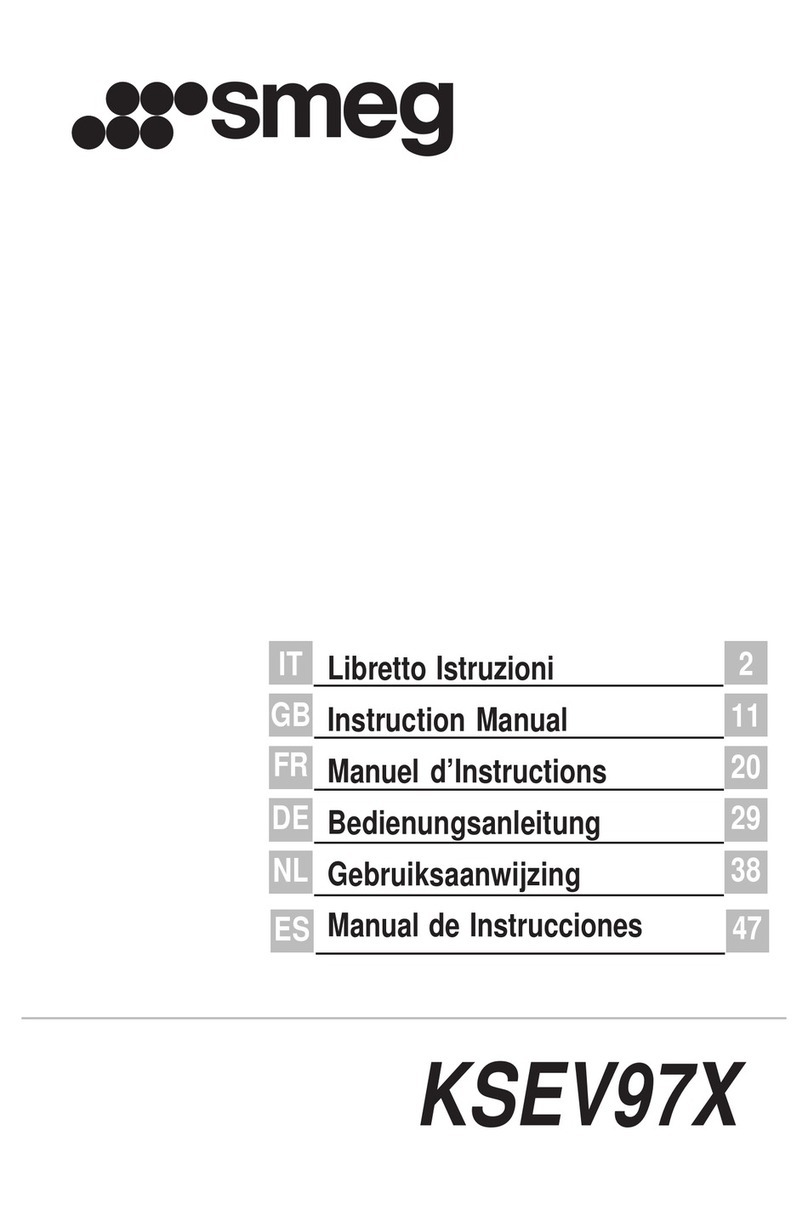GB
9
grease filter(s) (Fig.8) so that the unit is easier to handle.
In the case of assembly of the appliance in the suction
version prepare the hole for evacuation of the air.
• We recommend the use of an air exhaust pipe with a
diameter of 150.
If a pipe with a smaller diameter is used, the efficiency
of the product may be reduced and its operation may
become noisier
Please note:
If your version of the appliance has decorative glass be-
fore installing the hood, carry out the following steps as
shown in figure 4:
1 - Remove both the cooker hood body B and the glass
panel A from the packaging and place them horizontally
on a secure surface.
2 - Take the glass panel A and position it above the cooker
hood body B.
3 - Fix the glass panel securely to the cooker hood body
using the 4 sleeves C and 4 screws Das indicated.
• Fixing to the wall
Drill the holes A1 respecting the distances indicated
(Fig.2).
Fix the appliance to the wall and align it in horizontal posi-
tion to the wall units.
When the appliance has been adjusted, definitely fix the
hood using the screws A2 (Fig.5).
For the various installations use screws and screw an-
chors suited to the type of wall (e.g. reinforced concrete,
plasterboard, etc.).
If the screws and screw anchors are provided with the
product, check that they are suitable for the type of wall
on which the hood is to be fixed.
• Fixing the decorative telescopic flue
warning! If your appliance model features the lower
connector with a tab, before fixing it in place bend the
tab inwards using a pair of pliers, as illustrated in figure
5, step1.
Take care not to scratch the duct; wear gloves when re-
moving the protective film. (Fig. 3A).
Arrange the electrical power supply within the dimensions
of the decorative flue.
If your appliance is to be installed in the ducting version
or in the version with external motor, prepare the air ex-
haust opening.
Adjust the width of the support bracket of the upper flue
(Fig.3B).
Then fix it to the ceiling using the screws A(Fig.3B) in
such a way that it is in line with your hood and respecting
the distance from the ceiling indicated in Fig.2.
Connect the flange Cto the air exhaust hole using a con-
nection pipe (Fig.5).
Insert the upper flue into the lower flue. Fix the lower flue
to the hood using the screws Bprovided (Fig.5), extract
the upper flue up to the bracket and fix it with the screws
B(Fig.3B).
To transform the hood from a ducting version into a filtering
version, ask your dealer for the charcoal filters and follow
the installation instructions.
• Filtering version
Install the hood and the two flues as described in the para-
graph for installation of the hood in ducting version.
To assemble the filtering flue refer to the instructions
contained in the kit.
If the kit is not provided, order it from your dealer as ac-
cessory.
The filters must be applied to the suction unit positioned
inside the hood.
They must be centred by turning them 90 degrees until
the stop catch is tripped (Fig.9).
Use and maintenance
•We recommend that the cooker hood is switched on
before any food is cooked. We also recommend that the
appliance is left running for 15 minutes after the food is
cooked, in order to thoroughly eliminate all contaminated
air.
The effective performance of the cooker hood depends on
constant maintenance; the anti-grease filter and the active
carbon filter both require special attention.
•The anti-grease filter is used to trap any grease particles
suspended in the air, therefore is subject to saturation (the
time it takes for the filter to become saturated depends on
the way in which the appliance is used).
- To prevent potential fire hazards, the anti-grease filters
should be washed a minimum of every 2 months (it is
possible to use the dishwasher for this task).
- After a few washes, the colour of the filters may change.
This does not mean they have to be replaced.
If the replacement and washing instructions are not fol-
lowed, the anti-grease filters may present a fire hazard.
•The active carbon filters are used to purify the air which
is released back into the room.
The filters are not washable or re-usable and must be
replaced at least once every four months.
The active carbon filter saturation level depends on the
frequency with which the appliance is used, the type of
cooking performed and the regularity with which the anti-
grease filters are cleaned.
• Clean the cooker hood frequently, both inside and outside,
using a cloth which has been dampened with denatured
alcohol or neutral, non-abrasive liquid detergents.
• The light on the cooker hood is designed for use during
cooking and not for general room illumination. Extended
use of the light reduces the average duration of the bulb.
Use and maintenance
